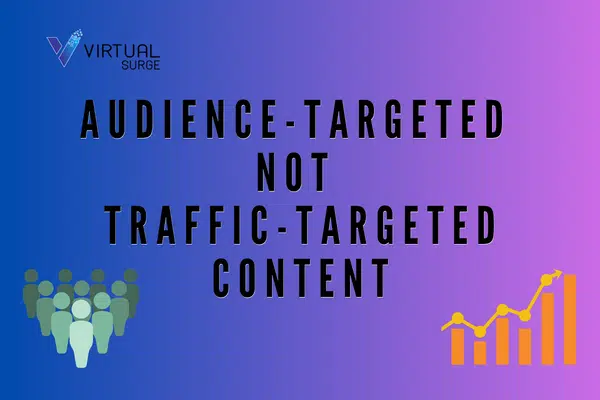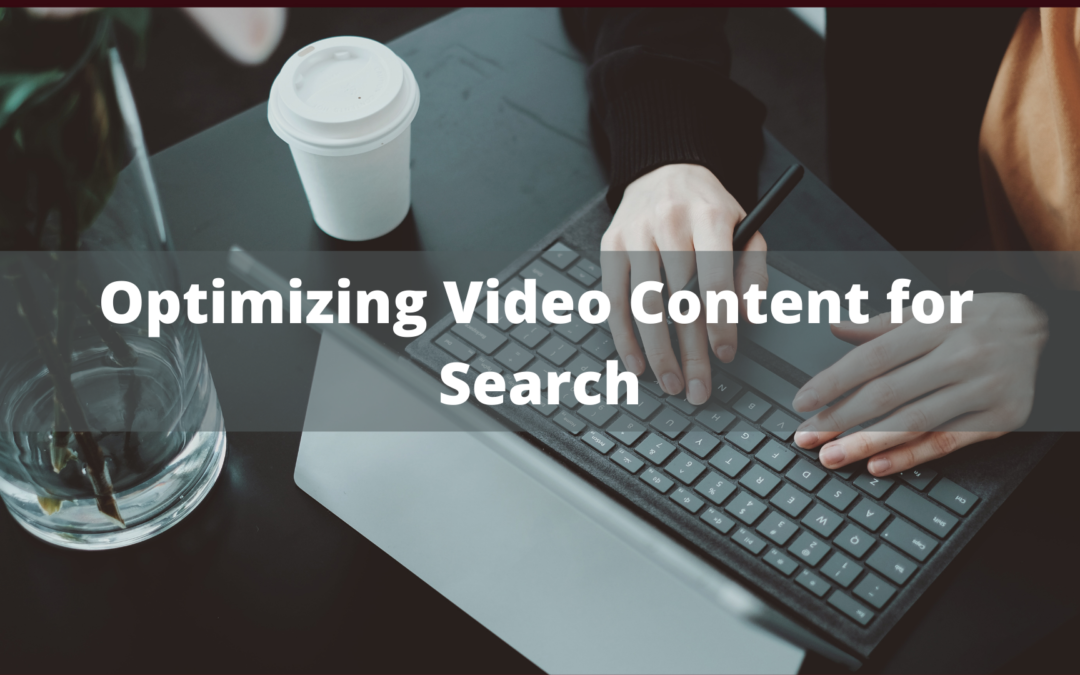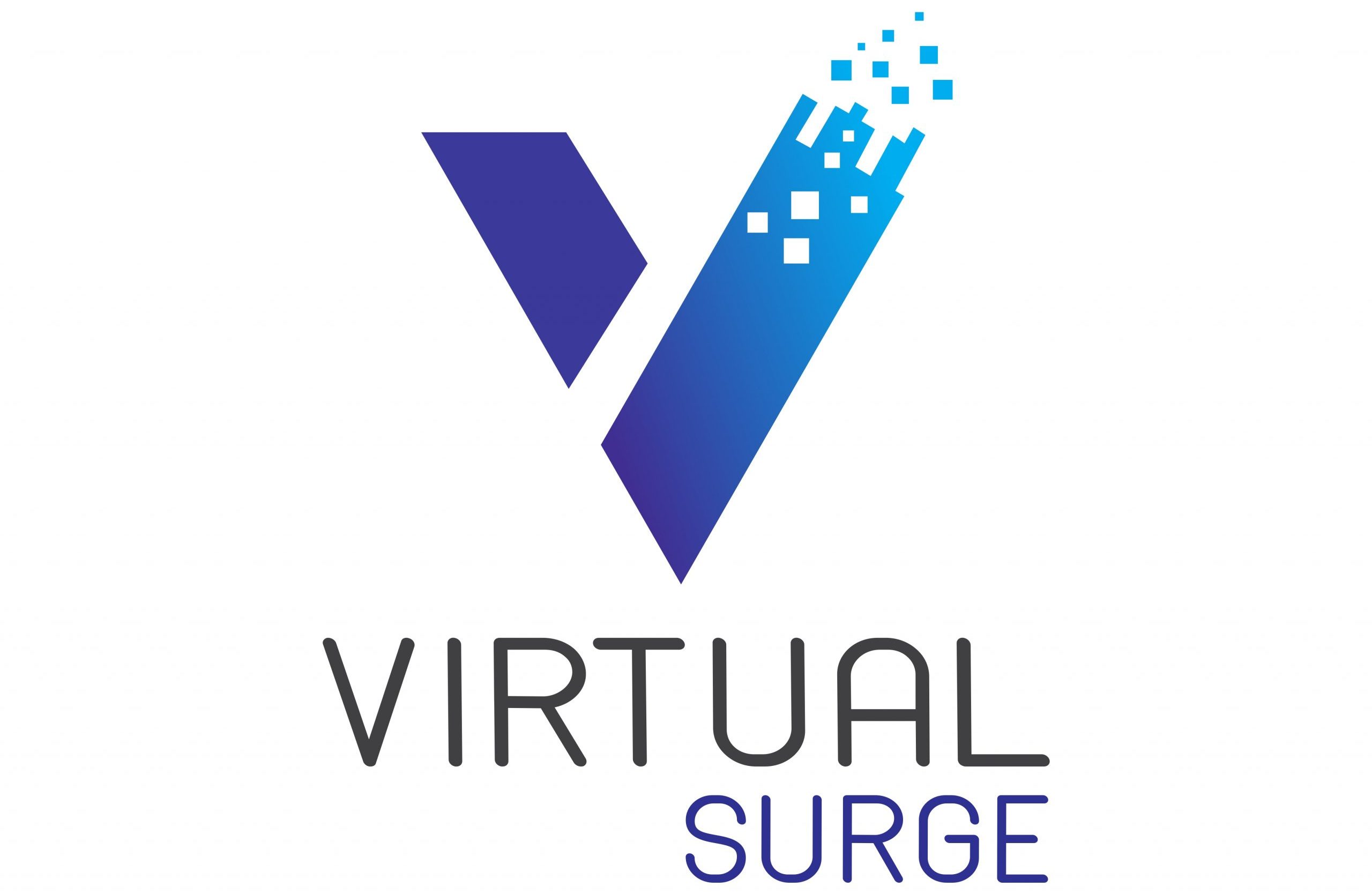
by shannon | Sep 24, 2023 | Baltimore SEO
In the ever-evolving landscape of digital content and search engine optimization (SEO), the concept of Author Authority has emerged as a pivotal force shaping the way we perceive and interact with online information. This article delves deep into the intricacies of Author Authority, shedding light on its significance, the evolution it has undergone, and its multifaceted impact on the digital realm.
Defining Author Authority
Author Authority, at its core, represents the measure of an individual’s expertise, trustworthiness, and credibility within a specific field or domain. It goes beyond mere content creation and extends to the author’s influence, recognition, and reputation in their respective niche. In essence, it is the digital manifestation of one’s stature as a subject matter expert.
Importance of Author Authority in SEO
In the ever-competitive digital arena, where millions of pieces of content flood the internet daily, Author Authority serves as a beacon of reliability for both search engines and users alike. Google, in particular, has placed increased importance on Author Authority as a means of filtering and ranking content. High Author Authority often translates to higher search engine rankings, improved click-through rates, and enhanced user trust.
The Evolution of Author Authority
The journey of Author Authority can be traced back to the early days of the Internet when the emphasis was primarily on keyword optimization and domain-level metrics. However, as search engines became more sophisticated and user-centric, the focus shifted towards identifying not just what is being said but who is saying it. This shift marked the evolution of Author Authority as a prominent factor in content ranking.
Understanding Author Authority
What is Author Authority?
Author Authority, while closely related to Domain Authority, distinguishes itself by honing in on the individual behind the content. It is a multifaceted metric that encompasses an author’s expertise, trustworthiness, and credibility, often displayed through their body of work, associations, and industry recognition.
Key Elements of Author Authority
Expertise: The foundation of Author Authority lies in the author’s knowledge and mastery of their subject matter. Demonstrating in-depth understanding and proficiency in their niche positions them as authorities.
Trustworthiness: Trust is the currency of the digital realm. An authoritative author is one whose audience and peers have faith in, relying on their information as accurate and reliable.
Credibility: Credibility is built through consistent, high-quality work and ethical conduct. It solidifies an author’s reputation and fosters trust among readers.
How Author Authority Differs from Domain Authority
Domain Authority primarily assesses the trustworthiness and credibility of a website as a whole. In contrast, Author Authority zeroes in on the individual creating the content. It is a more granular metric that acknowledges that not all content creators within a domain are equal in expertise and trustworthiness.
The Role of E-A-T in Author Authority
Explaining E-A-T (Expertise, Authoritativeness, Trustworthiness)
E-A-T, as coined by Google, encapsulates the essence of Author Authority. Expertise signifies the author’s knowledge, Authoritativeness relates to their position in the field, and Trustworthiness underscores their reliability.
Google’s Emphasis on E-A-T
Google’s algorithm updates, such as the Medic Update, have underscored the significance of E-A-T in content ranking. Understanding and adhering to E-A-T guidelines have become imperative for authors and content creators aiming to thrive in the digital realm.
How E-A-T Impacts Search Rankings
E-A-T isn’t merely a buzzword; it directly influences how search engines assess and rank content. Websites and authors with high E-A-T scores are more likely to secure top positions in search results, thereby gaining greater visibility and authority.
Case Studies on E-A-T and Author Authority
Real-world case studies illustrate the tangible impact of E-A-T on Author Authority. We’ll explore instances where adherence to E-A-T principles led to significant improvements in search rankings and user trust.
Building Author Authority
Building Author Authority is not an overnight endeavor; it requires a well-thought-out strategy, dedication, and consistency. In this section, we delve into the actionable steps and methodologies for establishing your presence as a recognized authority in your chosen field.
Strategies for Establishing Author Authority
Creating High-Quality Content
Content is the cornerstone of Author Authority. Content that is well-researched, insightful, and valuable to the audience not only attracts readers but also garners respect and recognition within the industry.
Guest Blogging and Contributions
Guest blogging on reputable websites and contributing to authoritative publications in your niche can significantly boost your Author Authority. These platforms provide a broader audience and an opportunity to showcase your expertise.
Social Media Presence
In the digital age, a strong Social Media Presence is essential for authors looking to build their authority. Active engagement, sharing valuable insights, and fostering meaningful connections can elevate your status as a thought leader.
Leveraging Personal Branding
Author Authority is intrinsically tied to your Personal Brand. Craft a compelling and consistent personal brand that reflects your expertise, values, and unique perspective. Your brand should become synonymous with credibility and trust.
Obtaining Authorship and Byline Recognition
Securing authorship and byline recognition of your content is pivotal. It not only boosts your credibility but also makes it easier for readers to identify and connect with your work across different platforms.
Tools and Metrics for Measuring Author Authority
Google’s Authorship Markup
Google’s Authorship Markup is a powerful tool for authors. It links your content to your Google Profile, providing a visible authorship stamp on search results, enhancing click-through rates, and establishing your authority.
Google Authorship vs. Author Rank
Distinguish between Google Authorship, which focuses on attribution, and Author Rank, which speculates a ranking mechanism based on author authority. Both play significant roles in establishing Author Authority.
Tracking Author Authority Metrics
Metrics such as Moz’s AuthorRank and SEMrush’s Author Impact Score quantify your Author Authority. These tools analyze your content’s performance, social engagement, and backlinks to gauge your influence.
Case Studies on Author Authority Measurement
Explore real-world examples where authors employed these tools to measure and improve their Author Authority. These case studies shed light on the practical application of metrics in the digital landscape.
The Impact of Author Authority on SEO
Understanding how Author Authority influences SEO is crucial for anyone looking to excel in the digital realm. In this section, we uncover the intricate relationship between Author Authority and search engine rankings.
How Author Authority Influences Search Engine Rankings
Author Authority serves as a decisive factor in determining content visibility on search engine results pages. Google’s algorithms favor content from authoritative authors, leading to higher rankings and increased organic traffic.
Authorship in Featured Snippets and Knowledge Graph
Highly authoritative authors often find their content featured in Google’s Featured Snippets and Knowledge Graph, positioning them as definitive sources of information.
The Link between Author Authority and Backlinks
Author Authority is closely linked to the acquisition of high-quality Backlinks. Authoritative authors naturally attract backlinks from other reputable websites, further solidifying their position in search results.
Author Authority’s Role in Content Distribution
Content created by authoritative authors tends to be shared and distributed more widely. Their work has a greater potential to go viral, resulting in increased brand exposure and engagement.
Challenges and Misconceptions
Even as Author Authority gains prominence in the digital landscape, it’s not without its challenges and misconceptions. Understanding these hurdles and dispelling myths is essential for authors striving to build their authority effectively.
Common Misconceptions about Author Authority
Misconception 1: Author Authority is solely about the quantity of content produced.
Misconception 2: Author Authority can be built overnight.
Misconception 3: It’s only about self-promotion; humility doesn’t matter.
Debunking these misconceptions helps authors adopt a more realistic and sustainable approach to building their authority.
Challenges in Building and Maintaining Author Authority
Challenge 1: Fierce Competition – In many niches, there’s intense competition among authors vying for authority status. Standing out amidst the crowd can be daunting.
Challenge 2: Consistency – Maintaining a consistent level of quality and engagement over time can be challenging, especially in rapidly evolving industries.
Challenge 3: Adhering to E-A-T Guidelines – Aligning with Google’s E-A-T guidelines requires continuous effort and adherence to best practices, which can be demanding.
Addressing Criticisms and Controversies
Authors with authority may also face criticism and controversies. Navigating these situations with grace and professionalism is essential. We’ll explore strategies for addressing negative feedback and controversies while safeguarding your Author Authority.
Case Studies and Success Stories
Real-world examples provide valuable insights into the practical application of Author Authority. In this section, we examine instances where authors successfully leveraged their authority to achieve remarkable results.
Successful Examples of Authors with High Authority
We showcase authors who have risen to the pinnacle of authority in their respective niches. Their journeys and strategies serve as inspiring blueprints for aspiring authors.
How Author Authority Transformed Businesses
Author Authority isn’t just about personal recognition; it can profoundly impact businesses. We’ll explore cases where businesses harnessed the authority of their authors to boost brand reputation and revenue.
Learning from Author Authority Success
Key takeaways from these success stories offer actionable advice for authors looking to emulate their achievements. These insights shed light on the strategies and principles that lead to Author Authority success.
Future Trends and Predictions
The digital landscape is ever-evolving, and Author Authority is no exception. In this section, we peer into the crystal ball and examine the future of Author Authority in SEO.
The Future of Author Authority in SEO
As search engines and algorithms become more sophisticated, the role of Author Authority is likely to expand. We discuss potential shifts and developments that authors should anticipate.
How AI and NLP Will Impact Author Authority
Artificial Intelligence (AI) and Natural Language Processing (NLP) are poised to play significant roles in assessing Author Authority. We explore how these technologies may influence the way Author Authority is measured and valued.
Predictions for Changes in Google’s Algorithm
Google’s algorithm is constantly evolving. We offer insights into potential algorithmic changes that could impact Author Authority and content ranking in the future.
Expert Opinions
To provide a well-rounded perspective, we’ve gathered insights from industry experts who have navigated the complexities of Author Authority.
Interviews with Industry Experts
Prominent experts in the field share their thoughts on the evolving landscape of Author Authority, offering invaluable guidance and predictions.
Insights on the Future of Author Authority
Experts provide unique insights into how Author Authority may evolve in the coming years and how authors can adapt to stay ahead.
Expert Tips for Aspiring Authors
Seasoned professionals offer practical tips and strategies for those aspiring to build their Author Authority from the ground up.
Conclusion
In the ever-competitive digital space, the Increased Emphasis on Author Authority is a trend that cannot be ignored. As we recap the significance of Author Authority and its multifaceted impact on SEO and content creation, we leave you with actionable takeaways for SEO Freelancers and Content Creators. Embrace Author Authority, invest in your expertise, and watch your digital presence soar.
Virtual Surge originally posted this article.

by shannon | Aug 21, 2023 | Baltimore SEO
In today’s dynamic digital landscape, where content reigns supreme, the success of your digital presence hinges upon a well-crafted content strategy. This strategy is the backbone of your online efforts, purposefully directing your content creation and distribution. Within this realm, the distinction between audience-targeted and traffic-targeted content is paramount, as it can be the key to unlocking meaningful engagement and long-term success.
Importance of Content Strategy
A robust content strategy is more than just a trend; it’s necessary. It lays the groundwork for your digital endeavors, providing a roadmap for what you create, when you share it, and where you share it. Without a clear strategy, your efforts could be akin to shooting arrows in the dark, hoping to hit something meaningful. By defining your content strategy, you align your efforts with your business goals, ensuring every piece of content serves a purpose.
Defining Audience-targeted and Traffic-targeted Content
Two distinct approaches emerge in the content landscape: audience-targeted and traffic-targeted content. Audience-targeted content focuses on catering to the needs, preferences, and pain points of a specific group of people – your target audience. Conversely, traffic-targeted content emphasizes attracting large visitors, often to boost numbers, but not necessarily building deep connections.
Understanding Audience-targeted Content

Identifying Your Target Audience
Central to the success of audience-targeted content is a clear understanding of your target audience. This entails delving into demographics, psychographics, and behaviors. Who are they? What motivates them? What challenges do they face? The answers to these questions guide your content direction.
Creating Buyer Personas for Precise Targeting
Buyer personas – detailed representations of your ideal customers – offer invaluable insights. Craft personas that go beyond superficial demographics and uncover your audience’s motivations, pain points, and aspirations. These personas enable you to craft content that speaks directly to their hearts and minds.
Tailoring Content to Address Audience Needs
Audience-targeted content is like a tailored suit – it fits perfectly. By addressing your audience’s unique needs and concerns, you position yourself as a reliable source of solutions. This fosters trust, which is a cornerstone of long-lasting customer relationships.
Downsides of Traffic-targeted Content

Focusing Solely on Numbers
While high traffic numbers might seem impressive, they hold little value if they don’t convert into meaningful engagement. Focusing solely on numbers can lead to a misguided strategy that fails to connect with your audience on a deeper level.
Bouncing Traffic and High Bounce Rates
Traffic-targeted content often attracts visitors who aren’t truly interested in what you offer. As a result, bounce rates – the percentage of visitors who leave your site after viewing only one page – can be alarmingly high. This indicates a lack of relevance and engagement.
Lack of Engagement and Conversion
Traffic without engagement is like a vehicle without fuel – it goes nowhere. Content not targeted toward your audience’s needs might attract visitors, but it fails to engage them or encourage conversion. This lack of engagement can ultimately harm your brand’s reputation.
Stay tuned for the next part of the article, where we delve into the benefits of audience-targeted content and how it can transform your digital strategy.
Benefits of Audience-targeted Content

Building Meaningful Connections
Audience-targeted content allows you to build connections that transcend fleeting interactions. You establish a genuine rapport when your content resonates with your audience’s needs and interests. This connection forms the basis of trust, loyalty, and advocacy.
Higher Engagement and Interaction
Content that speaks directly to your audience’s concerns ignites engagement. They are likelier to comment, share, and participate in discussions around topics that matter to them. This enhances your online community and extends your content’s reach.
Improved Conversion Rates and ROI
Engaged audiences are more likely to take desired actions, whether signing up for your newsletter, purchasing, or sharing their information. The result? Improved conversion rates and a healthier return on investment (ROI) for your content efforts.
Crafting Audience-targeted Content
In-depth Research and Analysis
To truly understand your audience, meticulous research is essential. Dive into their preferences, pain points, language, and digital behavior. Analyze existing data, conduct surveys, and explore social media interactions to gain a comprehensive understanding.
Addressing Specific Pain Points
Your audience seeks solutions to their problems. Addressing their pain points directly in your content positions you as a problem solver. Provide actionable insights and advice that alleviate their concerns, demonstrating your expertise.
Personalization and Relatability
The era of one-size-fits-all content is over. Personalization is the new standard. Tailor your content to speak directly to individual segments of your audience. Use relatable anecdotes, stories, and real-life examples to create a resonant connection.
Content Formats for Audience-targeted Approach
Educational Blog Posts
Deep-dive blog posts that provide valuable insights and practical guidance showcase your expertise and cater to your audience’s thirst for knowledge.
Problem-Solving Videos
Visual content that addresses common challenges and provides step-by-step solutions engages viewers and positions you as a trusted advisor.
Interactive Quizzes and Polls
Engage your audience with interactive content that entertains and provides valuable insights into their preferences and opinions.
Stay tuned for the subsequent sections, where we’ll explore leveraging data for content creation, implementing SEO for audience-targeted content, and measuring the success of your targeted strategy. Your journey toward effective content creation is just getting started.
Utilizing Data for Content Creation

Leveraging Analytics Insights
Your website analytics hold a treasure trove of information. Analyze which content resonates most with your audience, what drives engagement, and which channels bring the most valuable traffic. This data informs your content decisions.
Gathering Customer Feedback
Direct feedback from your audience provides invaluable insights. Conduct surveys, encourage comments, and actively listen to what your audience is saying. Their input can guide your content strategy and ensure it aligns with their needs.
Incorporating Trending Industry Data
Stay current by incorporating industry trends and data into your content. Sharing insightful industry reports, statistics, and expert opinions positions you as a thought leader and informs your audience.
Implementing SEO with Audience-targeted Content
Strategic Keyword Integration
Keyword research remains a cornerstone of SEO. Identify keywords that align with your audience’s search intent and incorporate them naturally into your content. This helps your content rank higher and reach the right eye.
Natural Language and Long-Tail Keywords
As search engines evolve, natural language and long-tail keywords are gaining importance. These keywords mimic how people speak and search, ensuring your content is discoverable by those seeking specific solutions.
High-Quality Backlinks from Relevant Sources
Build authority by acquiring high-quality backlinks from authoritative sources within your niche. These backlinks boost your SEO and enhance your credibility among your audience.
Measuring Success of Audience-targeted Strategy
Analyzing Engagement Metrics
Monitor metrics such as time on page, scroll depth, and click-through rates to gauge how engaged your audience is with your content. High engagement indicates content that resonates.
Tracking Conversion Rates
Conversion tracking reveals whether your audience is taking desired actions, such as signing up for newsletters or purchasing. This data reflects the effectiveness of your content in driving action.
Monitoring Social Media Shares and Comments
Social media is a barometer of content resonance. Track shares, comments, and interactions. More shares and meaningful discussions point to content that strikes a chord.
Avoiding Common Pitfalls
Overlooking Data Insights
Neglecting the data available to you leads to missed opportunities. Regularly review your analytics and adjust your strategy based on insights.
Neglecting Evolving Audience Preferences
Audience preferences are fluid. Stay attuned to shifts in your audience’s needs and adapt your content accordingly.
Being Too Niche or Too Broad
Balancing specificity with broader appeal is essential. Being too niche might limit your reach while being overly broad can dilute your content’s impact.
The journey towards audience-targeted content continues with a look into case studies showcasing brands that have excelled with this approach, followed by insights into future trends that will shape the content landscape. Let’s explore these next.
Case Studies: Brands Excelling with Audience-targeted Approach
Case Study 1: Company A’s Personalized Email Campaign
Company A leveraged audience insights to craft personalized email campaigns. They achieved higher open and click-through rates by tailoring content to individual preferences and needs, leading to improved conversions.
Case Study 2: Brand B’s Interactive Social Media Strategy
Brand B created interactive content that encouraged audience participation. Through quizzes, polls, and interactive posts, they fostered engagement and formed a community, resulting in a loyal following.
Stay tuned for the final section, where we’ll delve into the exciting future trends in audience-targeted content and conclude with a call to action that can transform your content strategy.
Future Trends in Audience-targeted Content
Embracing AI and Personalization Technology
Artificial intelligence will enable hyper-personalization, crafting content that adapts in real-time to individual preferences and behaviors.
Voice Search and Conversational Content
Creating content that aligns with conversational queries will be key to visibility as voice search gains traction.
Shifting SEO Focus toward User Intent
Search engines will increasingly prioritize content that fulfills user intent, rewarding content creators who truly address audience needs.
Conclusion
In the ever-evolving digital landscape, audience-targeted content is a beacon of relevance and engagement. By embracing the power of understanding your audience deeply, tailoring content to their needs, and strategically utilizing data and SEO, you pave the way for enduring success. As you embark on this content journey, remember that it’s not just about traffic; it’s about building connections, fostering engagement, and ultimately achieving long-term success through audience engagement.

by shannon | Aug 7, 2023 | Baltimore SEO
As the world’s most popular search engine, Google is constantly updating its algorithms to provide users with the most relevant and high-quality search results. One of the most important factors in determining the quality of a webpage is the content it contains, and Google has long used the E-A-T guidelines (Expertise, Authority, and Trustworthiness) to evaluate the credibility and quality of online content.
Recent Guideline Update
Recently, Google has added a new factor to the E-A-T guidelines: Experience. This means that Google now considers the experience of the author or creator when evaluating the quality of a content source. This is a significant change that will have a major impact on how content creators approach the creation of online content.
So, what does it mean for content creators? Well, it means that Google is placing an even greater emphasis on the expertise, authority, and trustworthiness of the author or creator of a piece of content. This is because Google wants to ensure that the content it displays in its search results is not only high-quality, but also created by experts who have a deep understanding of the topic they are writing about.
Important Factors
One of the key ways in which Google will evaluate the experience of a content creator is by looking at their online reputation. This includes factors such as the number of publications they have written for, the quality of those publications, and the level of engagement they have with their audience.
Another important factor will be the level of engagement that the content creator has with their audience. This includes things like the number of comments, likes, and shares that their content receives, as well as the level of engagement they have with their social media followers.
It’s important to note that the new experience factor is not just about the author or creator of a piece of content but also about the user experience. Google wants to ensure that the content it displays in its search results is not only high-quality but also provides a positive experience for the user.
The Intent of the Content
This means that content creators should focus on creating content that is not only informative and engaging but also easy to navigate and visually appealing. This includes things like using clear headings and subheadings, incorporating images and videos, and using a clean and easy-to-read layout.
In addition to creating high-quality content, content creators should also focus on building their online reputation and engaging with their audience. This includes things like building a strong social media presence, responding to comments and questions, and participating in online communities related to their niche.
Content Creators and Users
Ultimately, the new experience factor is a positive development for both content creators and users. By placing a greater emphasis on the experience of the author or creator, Google is ensuring that the content it displays in its search results is not only high-quality but also created by experts who have a deep understanding of the topic they are writing about.
For content creators, this means they need to focus on creating high-quality content that not only provides value to their audience but also demonstrates their expertise, authority, and trustworthiness. By doing so, they will be able to build a strong online reputation and increase their visibility in Google’s search results.
For users, this means they can trust that the content they find in Google’s search results is not only accurate and informative but also provides a positive experience. This will help them to find the information they need quickly and easily without having to wade through low-quality content that is created by individuals who lack expertise or authority in their field.
Final Thoughts
Overall, the addition of the experience factor to the E-A-T guidelines is a positive development that will help to ensure that online content is of the highest quality and provides a positive experience for users. Content creators who focus on creating high-quality content and building their online reputation will be well-positioned to take advantage of this new development and increase their visibility in Google’s search results.

by shannon | Jan 31, 2022 | Baltimore SEO, Posts
Techniques in Optimizing Video Content for Search
Do you know that more than 500 hours of video content are uploaded on YouTube every minute? In the recent past, video marketing has become an important global content marketing tool amid the rising number of active YouTube users.
With over two billion people using YouTube for entertainment, marketing, or learning, video views account for most internet marketing traffic. And as the video content advances with changing technology, it’s crucial to stay current on the best optimization processes to make your videos stand out and enhance the user experience.
The big question is — is your content showing on the first pages of search engines and video platforms? If not, keep reading this article for tips on how you can optimize your video content for search and reach a large targeted audience.
Integrate Target Keywords
Finding the right keywords is one of the ways to optimize your videos. You can use a keyword planner and choose about six keywords related to your video description and content.
Once you have a list of appropriate keywords, use one to name your video file. The rest of the keywords can feature in the meta tags and video description. Always confirm that the file type is compatible with the intended platform you’re uploading the video.
Create an Engaging and Eye-Catching Thumbnail
Your video’s thumbnail is what viewers first see when a video pops up on search engines. The thumbnail you use determines if the searchers will click on your video or shy away from it. A compelling, visually appealing, and easy-to-read thumbnail encourages people to click on your video.
An effective thumbnail will also reflect your brand and video description without compromising the visual appeal necessary to capture your viewers’ attention. It’s wise to ensure that the thumbnail has as high a resolution as possible, whether zoomed in or out.
Write a Concise, Enticing, and Clear Title
Besides the thumbnail, the video title is another factor that video searchers may focus on. It plays a role in determining whether they click on your video or not, and in turn, if you’ll get views or not.
Always ensure that the title represents what’s in the video content. That’s because it shows your brand is authentic and relevant to what viewers need, meaning they’ll get to enjoy the video since you offer what you’ve promised. Here’s how you can optimize the video title:
- Include keywords naturally while sparking curiosity
- Aim for at least a five-word title, with not more than 70 characters
- Write the most critical information upfront
- Always leave your brand details and episode numbers at the end
Accurate Description and Top-Notch Content
With thousands of competing brands, you can’t afford to compromise on content and video description. Always aim to deliver accurate, high-quality content that’ll keep the harshest of video critics glued to their screens. On the other hand, video descriptions are a type of metadata that ensures searchers find you easily and instantly decide if they will watch your videos or not.
You can use the tips below to optimize your video content and descriptions:
- Use unique and accurate information with relevant keywords
- Begin with the most important content while explaining the intent of the video
- Use hashtags associated with the content
Consider Captions, Transcriptions, and Subtitles
Transcriptions automatically boost the SEO factor, helping drive traffic to your site. Remember that search engines don’t read videos; hence, when you transcribe, use captions, or subtitles correctly; they will crawl over the provided captions and improve your ranking accordingly.
Transcribing also enables you to extend your reach and tap on a vast audience. For instance, you may capture the attention of the deaf.
Insert the Video You Want to be Ranked First
Embedding a video on the focus page will ensure that search engines find and rank it. If you have multiple videos you want to optimize for search, the best thing is to use different pages for each as Google usually stops crawling videos after the first one.
For an optimal user experience and high ranking, ensure that the video is easy to spot by making it the page’s focus. A hidden video will only turn off searchers and not appeal to search engine crawlers.
The Bottom Line
With the increasing popularity of video content marketing, understanding how to optimize video for search is crucial for any business. That’s one of the many tools to use for your overall SEO, a language we understand all too well here at Virtual Surge. Get in touch with us for quality SEO services to increase your brand’s visibility, attract new customers, and generate ROI.

by shannon | Dec 31, 2021 | Baltimore SEO, Digital Marketing
Trending SEO Approach for 2022
You know that SEO is a vital tool to achieving online visibility for your brand. But did you know that search engines keep tweaking their AI search algorithms, thereby evolving SEO best practices and trends? Each new update tends to transform the whole SEO landscape. Currently, SEO is gradually transitioning from traditional keyword stuffing to incorporating search intent. To stay on top of SERPs, businesses, brands, SEO technicians, and organizations must adopt the new trends in SEO to appeal to Google. While it’s much harder to rank high on search engines’ first pages, adopting the upcoming trends could make it possible. Here are some of the top search engine optimization trends of 2022 that your SEO team should keep an eye on.
Multitask United Model, or MUM
MUM is a natural language processing artificial intelligence model that Google will adopt to serve and interpret search engine users’ requirements. It will be an upgrade of the current Bidirectional Encoder Representations from Transformers (BERT) voice assistant model, having a much stronger emphasis on authority signals. Notably, it will employ an answer-centric approach to content. Here, the Multitask United Model will understand the user’s context, feelings, and intent before providing relevant answers to search questions.
MUM can multitask, whereby it analyzes videos, images, and text from 75 different languages and answers complex search questions. That feature will enable users to pose a single question during a voice search and get the relevant answer. The model won’t have to rely on the right keywords as its functionality revolves around user intent. With MUM coming up soon, consider optimizing your website for voice search.
Language Model for Dialogue Applications or LaMDA
LaMDA is a machine-learning model built on Transformer, which is Google’s own neural network architecture. It’s an AI model purposely built for dialogue, and it can read multiple words such as in a sentence or a paragraph. LaMDA uses conversations to find website pages and rank them after a search. Through its AI capabilities, it can pay attention to how these words relate to one another and then predict which words it thinks will be next. It’s also trained on dialogue, a feature that allows users to have conversations with Google during searches. Overall, it’s designed to provide results based on the information users feed it. It’s imperative to optimize your website for voice searches to capitalize on this SEO feature.
Shopping Graphs
Shopping Graphs is a recently announced model by Google after it started paying more focus and attention to improving its capabilities for online shopping. It’s a dynamic, artificial intelligence-enhanced model that is programmed to understand a constantly changing set of sellers, reviews, and product information. It also acquires the data from retailers and brands directly and can determine how all these attributes connect and relate to each other. Shopping Graphs works in real-time, allowing people and users to discover and shop for products that are available at that particular moment they’re shopping. If your brand sells goods online, it’s about time to update your product descriptions.
Passage Ranking
Passage Ranking is a new and trending SEO feature that’s likely to take the online world by storm in 2022. Also referred to as passage indexing, it allows businesses to rank for a specific paragraph or passage rather than the entire web page. Passage Ranking is a good strategy for brands looking to have their pages rank up on top searches. Google has tweaked its algorithm to look at stronger signals about a page, such as the titles and headings. That way, it understands which results are more relevant to the search question. Therefore, it’s imperative to keep your on-page optimization up to date.
Suggested Clips
It’s another top feature for parties that use video marketing as part of their SEO strategy for traffic generation and leads acquisition. Recent changes by Google through introducing two video structured data types: clip markup and seek markup, have boosted video marketing for SEO. The feature allows you to automatically build key moments in your website or YouTube videos and include timestamps and titles on video excerpts. Incorporating these changing video trends into your internet marketing strategy can help your videos rank for competitive terms.
Core Web Vitals
The Core Web Vitals is a set of inbuilt metrics that measures a page’s load speed from a user experiences perspective, capturing the aspects of loading speed, how interactive the website is, and the visual stability of a website. Currently, it is one of the top trending website ranking factors for businesses running web pages.
There are three Core Web Vitals to keep an eye out for. They include:
- Largest Contentful Paint (LCP) that measures the loading performance of a page. Google prefers websites having an LCP under 2.5 seconds once a web page starts loading. If your page speed loads between 2.5 to 4 seconds, it needs improvement. And if it loads beyond 4 seconds, Google may rank it low on SERPs.
- First Input Delay (FID) that measures interactivity. The recommended FID by Google is 100 milliseconds. A website with less than 100 milliseconds is Google’s friend, the one with an FID between 100 to 300 milliseconds needs improvement, while sites with an FID above 300 milliseconds are likely to have a low rank.
- Cumulative Layout Shift (CLS) measuring the visual stability of a website. Currently, Google recommends a score of below 0.1 seconds. Sites with a score of 0.1 to 0.25 seconds need improvement, while those with a score above 0.25 could have a poor rank.
Combined with mobile-friendliness, HTTPS protocols, and the lack of page advertisements or interstitials, Google’s algorithm will rank your website’s user experience high. It’s clear that user experience is at the top of Google’s ranking algorithm. If you haven’t already made your website user-friendly, it’s time to do it to meet the recommended Core Web Vital Scores and stay on top of the game.
Final Thoughts
There’s a need for evolution and timely adoption of the above upcoming and already launched strategies for your business to succeed in the current internet space. These measures can help set your website apart and make it unique from those of your competitors. However, incorporating such trends could be a hill climb if you aren’t an SEO specialist. Worry not since Virtual Surge has got your back. We offer a wide range of web-based services, including search engine optimization and auditing. Feel free to contact us to find out what we have in store for you.

by shannon | Dec 25, 2021 | Baltimore SEO, Digital Marketing, Local SEO, Posts
What You Need To Know About Google’s December 2021 Product Review Update
Product reviews are consumer opinions or feedback regarding goods or services. Many business websites have product review sections that allow customers to rate and review the products they have purchased. Such reviews are public, and they may influence the purchase decisions of other prospects. These reviews often use an affiliate link to products listed on a commerce site, intending to guide those finding the reviews useful towards the purchasing page. Recently, Google announced the December 2021 product review update. The algorithm update will impact product review pages and will take three weeks to complete. Here’s what you should know about Google’s product review update.
Product Review Page Ranking Assessment
In its announcement, Google indicates that the update will occur through an automated assessment specific to the product reviews webpage. It also communicated that the product review pages will be subject to similar ranking factors as those that apply to regular web pages.
The Timing
The December 2021 product review update has been a gradual process launched and commenced in April. If you have made improvements on your product reviews page, you may see changes in terms of ranking. Google conducted a spam update in early November followed by a core algorithm update during the last days of November. Many might argue that the updates are ill-timed due to the Thanksgiving and Christmas festivities which are the busiest shopping seasons. However, the updates haven’t been too disruptive. Businesses shy away from performing updates during such seasons since it could lead to unintentional loss of web rankings. But the opposite could happen. Google announced that the goal of the update was to reward sites with authentic high-quality reviews and to improve the quality and usefulness of reviews it shows to users.
New Product Review Best Practices
Based on clientele feedback, Google warned that the two new product review requirements are aimed at fishing out fake product reviews. First of all, any product review should show that the person writing it has used the product in question. That’s because many of the reviews are low-quality reviews stemming from affiliate sites that post a rewritten version of the product’s specifications and features. The second requirement is that the product reviews offer multiple purchase options. The goal is to enhance the customer experience. Google is looking to adopt these measures as part of its future product review algorithm updates. Therefore, these two best practices have a high likelihood of becoming future ranking factors for product review pages. The sooner you adopt and implement the practices for your product review pages, the better your SEO position.
Promoting Quality Product Reviews
With user feedback in mind, Google provided guidelines on how to review products through a new document titled writing high-quality reviews. Let’s explore some recommendations you should follow to abide by Google’s guidelines:
- The product under review should be from a user’s perspective or point of view.
- The reviews should demonstrate that you are knowledgeable about the products under review. It’s imperative to show that you are an expert in your niche.
- The product reviews should incorporate audio, videos, or other links which give evidence of the specific experiences reviewers have had with the product. That helps to support your expertise and the review’s authenticity.
- Share and provide quantitative evidence on how the products measure up in various performance categories.
- Provide evidence for the unique features of the products and how these features set them apart from other products they compete with.
- Offer coverage for other comparable products potential clients can consider or provide explanations about which product might be best for certain circumstances or uses.
- Provide reviews that discuss the benefits and drawbacks of a particular product based on original research conducted on the product.
- It also helps to have a comprehensive description of how products have evolved from previous releases. That addresses any issues and influences consumers’ final purchase decisions.
- Reviews should identify key decision-making factors for the products category and how the product performs in those areas. For instance, a review on a car could provide information on safety, handling, fuel economy, and energy efficiency, which are vital decision-making factors before purchasing a vehicle.
- Have reviews that incorporate descriptions of a product’s design and its effect on the user beyond what the manufacturer says.
- Product reviews should include inbound or outbound links to other resources to help the reader make an informed decision.
- Quality product reviews also include outbound links to multiple sellers to give the reader options to purchase from a seller of their own choice.
To Sum It Up
With product review algorithm updates taking force, it’s time that you align your website and product reviews page with the above requirements. It can be a daunting endeavor to embark on the process yourself, but that shouldn’t worry you. You can contact the website specialists like those at Virtual Surge. Let us manage your reviews and align them with Google’s update requirements while you focus on what you do best-run your business!












